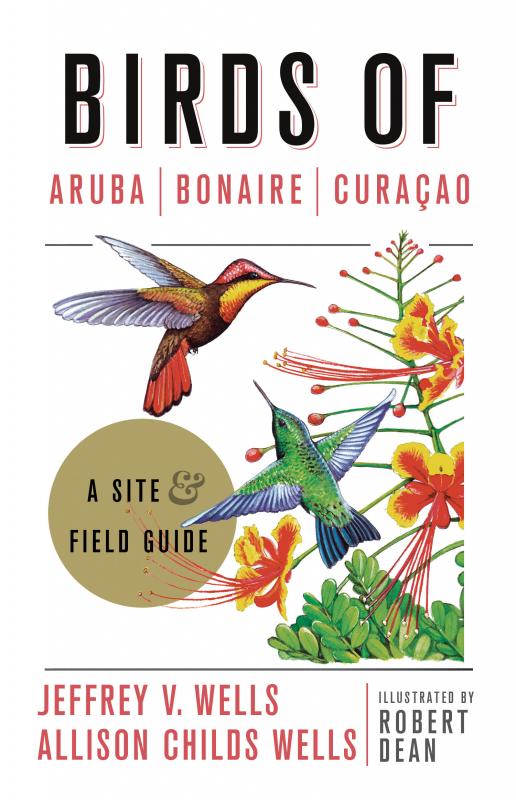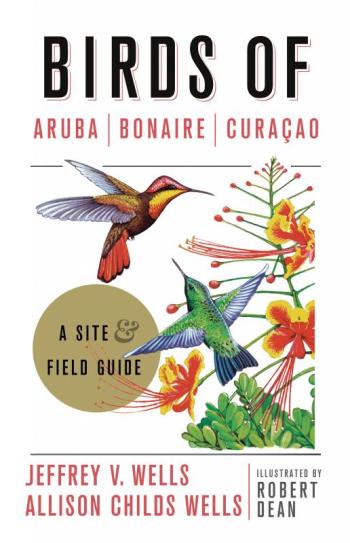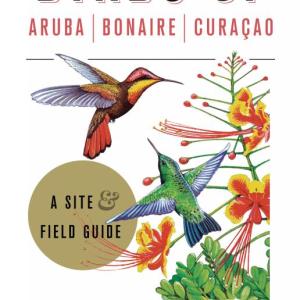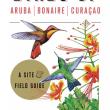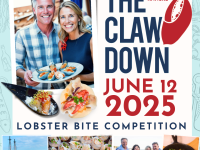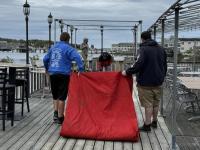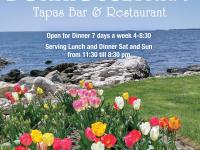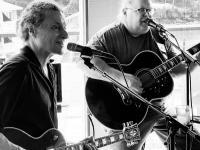What Do the Dutch Antilles and Maine Have in Common?
We are pleased and excited to announce the publication of our new book, “Birds of Aruba, Bonaire, and Curaçao: a Site and Field Guide” through Cornell University Press and Zona Tropical Publishers. What do Maine and the so-called ABC islands, or Netherlands Antilles, have in common?
Several things! Most obvious perhaps is that many Mainers enjoy winter visits to these warm, sunny islands located off the coast of Venezuela (Aruba is just 17 miles from the mainland). We are always surprised by the number of people from Maine who, if we mention the ABC islands, tell us of their visits to one or more of them.
Something else that Maine and the islands have in common is birds.
A birder visiting Aruba, Bonaire, or Curaçao during the winter will recognize many familiar species. Ospreys plunge into the shallow waters of Bonaire’s Pekelmeer (“Pickle Lake”) as flocks of bright pink American flamingos feed in the background, or hover over the Bubali pond on Aruba while big, dark pirates-of-the-sky—magnificent frigatebirds—soar overhead.
In rainy years when these otherwise very dry islands are blessed with shallow freshwater ponds or salinas scattered about, there are often many shorebirds that spend the winter, some perhaps having migrated through Maine on their way south. Species that a Maine birder might see along the shore from a place like the Boothbay Regional Land Trust’s Ovens Mouth Preserve, like greater or lesser yellowlegs or least sandpiper, can be found in winter on Aruba, Bonaire, and Curaçao. One of our favorite shorebird experiences on the islands is watching ruddy turnstones scurrying under the tables of open air restaurants and bars located near the shore. At several restaurants that we have dined on Bonaire and Aruba, we have even seen a few brazen turnstones jumping up on to recently vacated tables to snatch leftovers before the waiters could clear them off. Amazing to think that some ruddy turnstones instead stay here in Maine for the winter and search for food on icy, wave-dashed rocky shorelines!
What makes it fun for visitors to the islands from afar is the chance to see familiar birds like these amid a set of species totally unfamiliar and new. Around those same open air restaurants, you will likely see an eared dove, a short-tailed relative of our mourning dove. Or one of our favorite birds, the bright yellow, black, and white bananaquit. We have nicknamed the bananaquit the “chickadee of the Caribbean” as in many places like Aruba, Bonaire, and Curaçao it is one of the species you are most likely to see on the grounds of hotels, resorts, and open-air restaurants. Bananaquits love sugar and anything sweet so, when given the opportunity, they will fly onto a breakfast table and stick their tongues into glasses of orange juice and plates sticky with maple syrup. Many people place small dishes with fruit juice or jelly out for them as we do up here in Maine for Baltimore orioles.
The ABCs have two of their own resident oriole species. The neon orange and jet black troupial is like a Baltimore oriole on steroids—brighter, bigger, and bolder and with a cool triangle of blue skin behind the eye. The smaller, shier yellow oriole is, as its name suggests, bright lemon yellow with black wings, tail, and throat. Both orioles essentially reach the northern limit of their South American range on the islands. Each island has its own subspecies of the brown-throated parakeet—perhaps poorly named since the feature you are most likely to notice is the bright yellow around the face or eye. Meanwhile, Bonaire is one of few places in the entire world where you can see the yellow-shouldered parrot. The islands have two resident hummingbird species (pictured on the cover of our book), the tiny blue-tailed emerald and the much larger ruby-topaz hummingbird.
These are just a few examples of the beautiful bird species that visitors can enjoy during a visit to the islands.
If we’ve whet your appetite for a visit to Aruba, Bonaire, or Curaçao when the temperatures here in Maine begin to drop and the roads get icy, pick up a copy of our book, available now. It contains, along with a full field guide to the birds, detailed directions and maps to all the best birding sites on the islands. Widely available but you can read more and purchase it directly from Cornell here: http://www.cornellpress.cornell.edu/book/?GCOI=80140100155320. Bon voyage!
Jeffrey V. Wells, Ph.D., is a Fellow of the Cornell Lab of Ornithology. Dr. Wells is one of the nation's leading bird experts and conservation biologists and author of “Birder’s Conservation Handbook”. His grandfather, the late John Chase, was a columnist for the Boothbay Register for many years. Allison Childs Wells, formerly of the Cornell Lab of Ornithology, is a senior director at the Natural Resources Council of Maine, a nonprofit membership organization working statewide to protect the nature of Maine. Both are widely published natural history writers and are the authors of the book, “Maine’s Favorite Birds.”
Event Date
Address
United States

